Out Now
The Aussie Issue
Current Issue
The Aussie Issue
DEC 25 - JAN 26

Lone workers are found everywhere. Whether they’re self-employed, contractors, or full-time employees, they take on an increased risk to fulfil difficult roles in almost every industry across the country. Bill Morrissey of Master Electricians Australia looks at the key considerations.
Globalisation and technological advancement have fuelled the emergence of a mobile workforce, with almost 70 per cent of Australians working remotely each week. According to a study by the International Workplace Group (IWG), almost 50 per cent of Australian employees work remotely for at least half of the week, while more than two-thirds work at least one day a week outside the office.
In Australia, working alone is defined as: “work by themselves and/or work in the community with only limited support arrangements, which therefore expose them to risk by being isolated from the usual backup support. This is the case whether they regularly work alone or are only occasionally alone and do not have access to immediate support from managers or other colleagues.”
Working alone, even in urban environments, poses challenges and potential dangers for employers and their workers.
The need for a business operator to manage hazards and risks posed to lone workers is covered under general WHS requirements in all states and territories. Most regulators also have specific procedure or code of practice documentation to assist managers and workers manage the hazards safely.
Establishing a healthy and safe working environment for lone workers can be different to that for other workers, and needs careful consideration when establishing work processes. Employees also have responsibilities to take reasonable care of themselves and other people affected by their work activities and to cooperate with their employers in meeting their legal obligations.
Employers should consider:
Lone working can negatively impact employees’ work-related stress levels and mental health. If a business’s contact with its workers is poor, employees may feel disconnected, isolated or abandoned, which can affect their performance and potentially their stress levels or mental health. It may be hard for an employer to monitor or detect this, so attention needs to be given to building suitable support structures for lone workers.
Any form of violence against workers is unacceptable and may affect psychological and physical health. Working alone does not automatically imply a higher risk of violence, but it does make workers more vulnerable. The lack of nearby support from colleagues means a lone worker may be less able to prevent an incident from occurring.
Employers should have measures in place to support any worker who has been subject to an abusive or violent incident. Workers should also play an important part in identifying and reporting incidents so management can address these and implement processes to prevent reoccurrences.
It is vital the employer has set clear limits and directions on what can and cannot be done while working alone. Ensure workers are:
The extent of supervision required depends on the risks involved and the ability of the lone worker to identify and handle health and safety issues. The level of supervision required should be based on the findings of a risk assessment – the higher the risk, the greater the level of supervision required. Where possible, supervision should include monitoring the worker’s stress and mental health, training needs, company work processes and standards, and verifying that the actual work environment and challenges are what the business believes they are. Does reality align with what management believes is the case?
A risk assessment should also help identify the most appropriate level of supervision for lone workers especially where high-risk activities may require another person to be present.
Monitoring and keeping in touch with workers is absolutely vital. Technology advances mean there is a wide range of systems and devices available to employers to monitor lone workers. Any monitoring system needs to be embedded into an organisation so it is well understood by workers. It is important to ensure clear procedures are in place to encourage effective communication.
These may include:
You should regularly test technical solutions and all emergency procedures to ensure lone workers can be reached or contacted if a problem or emergency is identified.
If you work alone, here are some quick and easy tips on what you should and shouldn’t do:
Do let people know your whereabouts
Make sure that at least one other person is aware you’re working alone, where you’ll be and for how long.
Do your own risk assessment
Before you start, identify any possible safety issues and inform someone if you discover something that is not easily controlled.
Do follow safety training and guidelines
It’s easy to forget or ignore health and safety advice, particularly if you’re doing a task that you’ve done many times before. It’s important to remember your training at all times and follow appropriate safety guidelines.
Do carry a personal alarm, mobile, GPS app, tracker
Personal alarms can be a lifesaver in difficult situations. These should provide a quick and easy way to get assistance if needed. Some lone worker alarms can activate automatically in the event of a fall and send your location to colleagues or emergency services.
Don’t assume it won’t happen to you
When it comes to safety, complacency is your worst enemy. Lone workers must take responsibility for their own safety. Be prepared and alert, make sure you know of any hazards and don’t cut corners where safety’s concerned. Often those who think they won’t get hurt are the ones that do.
Don’t attempt anything that cannot be done safely alone
If it’s not safe for you to do a task by yourself, then find someone to help you. Don’t try to overstretch yourself, as this makes accidents more likely.
Don’t take unnecessary risks
Working alone makes you more vulnerable if something goes wrong. Therefore you must be more vigilant and mindful of your safety and avoid anything that may put you in harm’s way.
Don’t be afraid to trust your instincts
Don’t do anything that you’re uncomfortable with. This could be anything from operating machinery alone to entering a client’s premises.
The golden rule is – be safe, don’t be sorry.
If you have any questions about safety at your workplace, Master Electricians have unlimited access to the MEA Safety hotline. Phone 1300 889 198.
Keep up to date with our latest news and competitions by subscribing to our regular newsletter.

Issue 189
OCT - NOV 2025

Issue 188
AUG - SEPT 2025

Issue 187
JUN - JUL 2025

Issue 186
APR - MAY 2025
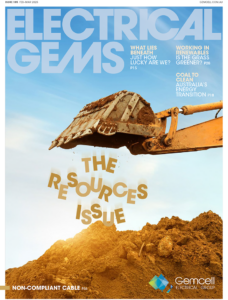
Issue 185
FEB - MAR 2025

Issue 184
DEC 2024 - JAN 2025

Issue 183
OCT - NOV 2024

Issue 182
AUG - SEPT 2024

Issue 181
JUN - JUL 2024

Issue 180
APR - MAY 2024

Issue 179
FEB - MARCH 2024

Issue 178
DEC 2023 - JAN 2024
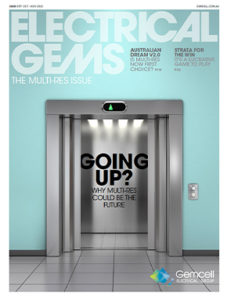
Issue 177
OCT - NOV 2023

Issue 176
AUG - SEPT 2023

Issue 175
JUN - JUL 2023

Issue 174
APR - MAY 2023

Issue 173
FEB - MAR 2023

Issue 172
DEC 2022 - JAN 2023
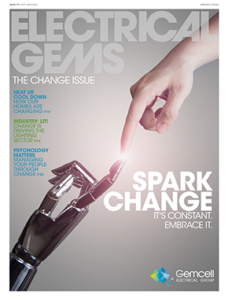
Issue 171
OCT - NOV 2022

Issue 170
AUG - SEPT 2022

Issue 169
JUN - JUL 2022

Issue 168
APR - MAY 2022

Issue 167
FEB - MAR 2022

Issue 166
DEC 2021 - JAN 2022

Issue 165
OCT - NOV 2021

Issue 164
AUG - SEPT 2021
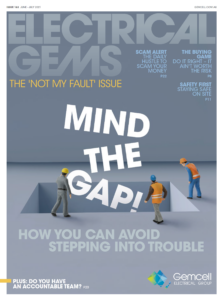
Issue 163
JUN - JUL 2021
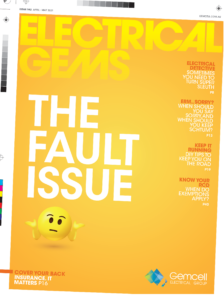
Issue 162
APR - MAY 2021

Issue 161
FEB - MAR 2021

Issue 160
DEC 2020 - JAN 2021

Issue 159
OCT - NOV 2020

Issue 158
AUG - SEPT 2020
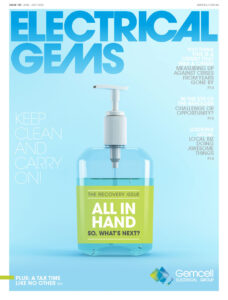
Issue 157
JUN - JUL 2022

Issue 156
APR - MAY 2020

Issue 155
FEB - MAR 2020

Issue 154
DEC 2019 - JAN 2020

Issue 153
OCT - NOV 2019

Issue 152
AUG - SEPT 2019

Issue 151
JUN - JUL 2019
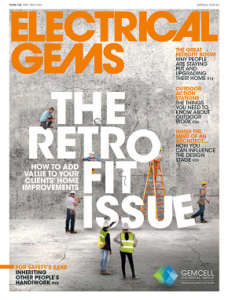
Issue 150
APR - MAY 2019
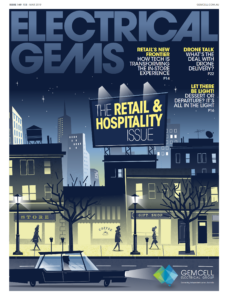
Issue 149
FEB - MAR 2019
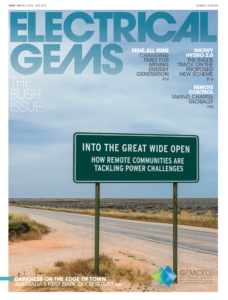
Issue 148
DEC 2018 - JAN 2019

Issue 147
OCT - NOV 2018

Issue 146
AUG - SEPT 2018

Issue 145
JUN - JUL 2018

Issue 144
APR - MAY 2018

Issue 143
FEB - MAR 2018

Issue 142
DEC 2016 - JAN 2017

Issue 141
OCT- NOV 2017

Issue 140
AUG - SEPT 2017

Issue 139
JUN - JUL 2017

Issue 138
APR - MAY 2017

Issue 137
FEB - MAR 2017
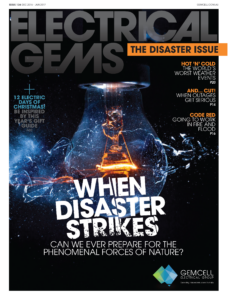
Issue 136
DEC 2016 - JAN 2017

Issue 135
OCT - NOV 2017

Issue 134
AUG - SEPT 2016

Issue 133
JUN - JUL 2016
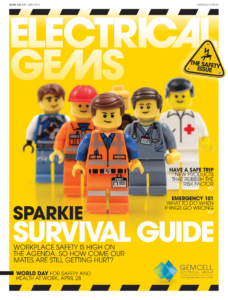
Issue 132
APR - MAY 2016

Issue 131
FEB - MAR 2016
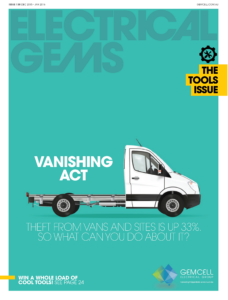
Issue 130
DEC 2015 - JAN 2016

Issue 129
OCT - NOV 2015

Issue 128
AUG - SEPT 2015

Issue 127
JUN - JUL 2015

Issue 125
APR - MAY 2015

Issue 125
FEB - MAR 2015

Issue 124
DEC 2014 - JAN 2015

Issue 123
OCT - NOV 2014

Issue 122
AUG - SEPT 2014

Issue 121
JUN - JUL 2014

Issue 120
APR - MAY 2014

Issue 119
FEB - MAR 2014

Issue 118
DEC 2013 - JAN 2014

Issue 117
OCT - NOV 2013

Issue 116
AUG - SEPT 2013

Comments (0)
Write a Comment